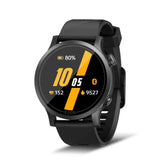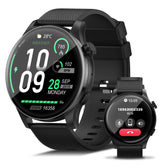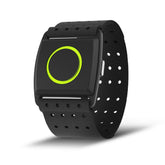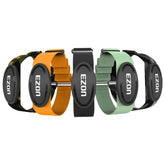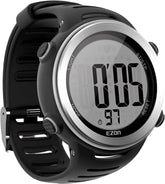Healthy Heart Rates During Workouts: What You Need to Know
Healthy Heart Rates During Workouts: What You Need to Know
Maintaining a healthy heart rate during exercise is essential for optimizing performance, ensuring safety, and achieving long-term health benefits. Below is a science-backed guide to understanding heart rate zones, activity-specific recommendations, and how EZON’s advanced technology empowers users to monitor and refine their training effectively.
1. The Science of Target Heart Rate Zones
Heart rate zones are calculated as percentages of maximum heart rate (MHR). While the classic formula \(220 - \text{age}\) provides a baseline, studies emphasize individualized adjustments:
General Fitness: Aim for 60–85% of MHR during moderate to vigorous exercise.
Safety Threshold: Prolonged exertion above 85% MHR (e.g., >153 bpm for a 30-year-old) may strain the cardiovascular system, particularly in untrained individuals.
Fat-Burning Zone: The 50–70% MHR range (e.g., 95–133 bpm for a 30-year-old) is optimal for steady-state fat oxidation.
Key Insight: A 2018 study on exercise intensity found that heart rates exceeding 180 bpm in adolescents triggered adverse physiological responses, underscoring the importance of moderation.
2. Activity-Specific Heart Rate Guidelines
A. Cardio Workouts (Running, Cycling)
Endurance Training: Maintain 70–80% MHR to enhance aerobic capacity.
HIIT: Alternate between 85–95% MHR (work phase) and 60–70% MHR (recovery).
B. Strength Training
Hypertrophy Focus: Keep heart rate at 50–70% MHR to balance energy demands and muscle recovery.
Circuit Training: Brief spikes to 80% MHR during supersets can be monitored via motion sensors.
C. Swimming
Optimal Range: 50–65% MHR due to reduced thermal stress. Waterproof wearables like the EZON Watch track stroke efficiency and oxygen saturation (SpO₂).
Practical Tip: Use the morning heart rate comparison method from clinical studies: If your post-workout morning heart rate exceeds pre-exercise levels by >10 bpm, reduce intensity.
3. Safety and Monitoring Essentials
A. Risk Mitigation
Overtraining Signs: A persistently elevated resting heart rate (RHR) by >10 bpm indicates fatigue.
Health Screening: Individuals with conditions like hypertension or obesity should consult a physician before high-intensity training.
B. Precision Tracking with EZON
Dynamic HR Algorithm: Combines PPG sensors and motion filtering for ±2 bpm accuracy during dynamic activities.
Real-Time Alerts: Vibrates when exceeding safe zones (e.g., >85% MHR during steady-state runs).
Recovery Insights: Analyzes heart rate variability (HRV) and sleep data to recommend rest days.
4. How EZON Enhances Heart Rate Monitoring
A. Advanced Sensor Fusion
Medical-Grade PPG: Tracks HRV to detect stress (HRV <20ms) and overtraining.
Dual-Band GPS: Ensures pace accuracy during outdoor runs to prevent accidental intensity spikes.
B. AI-Driven Coaching
Personalized Zones: Auto-adjusts targets based on fitness level and recovery status.
Triathlon Mode: Seamlessly switches metrics for swim, bike, and run segments.
C. Long-Term Health Trends
Resting HR Trends: A decline in RHR (e.g., from 75 to 65 bpm over 6 months) signals improved cardiovascular efficiency.
Hydration Alerts: Adjusts recommendations based on sweat rate and ambient temperature data.
5. Practical Tips for Everyday Training
Calculate Your Zones: Use the formula Target HR for Moderate Exercise ≈ (Max HR - Resting HR) × 65% + Resting HR (from 2018 studies) to customize targets.
Morning Fasted Cardio: Pair low-intensity workouts (60–70% MHR) with hydration monitoring for fat loss.
Sync with Recovery: Let EZON’s Smart Sleep Coach align bedtime routines with daytime exertion levels.
Conclusion: Train Smarter, Not Harder
Understanding and monitoring your heart rate during exercise is key to balancing effort and safety. The EZON heart rate monitor watch bridges science and practicality, offering real-time feedback, personalized coaching, and holistic health insights. By leveraging advanced sensors and AI analytics, users can optimize workouts, avoid overtraining, and achieve sustainable fitness gains.
Learn more visit: https://ezonwatch.com
